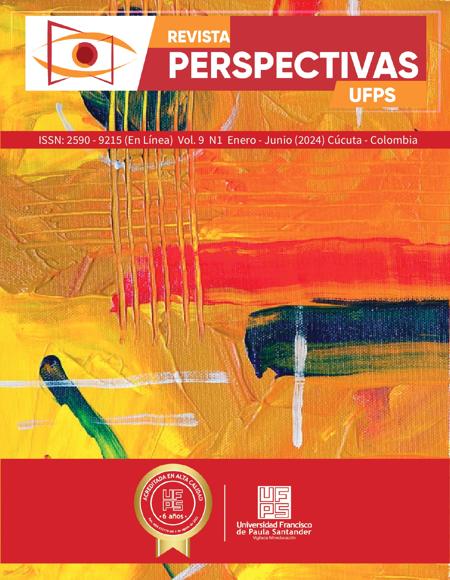Artistic expression and emotions in the classroom: painting as a medium for school coexistence
Expresión artística y emociones en el aula: la pintura como medio para la convivencia escolar.
Main Article Content
This text explores how painting in the classroom can create a safe and welcoming school environment, allow students to express their emotions creatively, and develop conflict resolution skills. The study is based on a socio-critical paradigm and a qualitative approach. Participatory action research methodology was used with 4th and 5th grade students from the Alejandro Gutiérrez Calderón Educational Institution, San Juan Bosco campus. This work evidences the results of painting workshops with the students through data systematization using field diaries, interviews, and analysis of artistic creations. The results suggest that painting is an effective tool for students to express their emotions and improve school coexistence. The study demonstrates that artistic expression, specifically painting, improves school coexistence. Artistic interventions are valuable for addressing emotional and social challenges in the educational field. Therefore, it is recommended to integrate artistic practices into education to promote harmonious and constructive coexistence among students.
Downloads
Publication Facts
Reviewer profiles N/A
Author statements
- Academic society
- Universidad Francisco de Paula Santander
- Publisher
- Universidad Francisco de Paula Santander
Article Details
Aird, M. (2012). Gestión de la convivencia y solución de conflictos en centros educativos. Revista Iberoamericana de Educación, 59(2), 1-14. DOI: https://doi.org/10.35362/rie5921384
Arenas Álvarez, D. A., & Guevara Aguirre, D. K. (2021). La incidencia de la pintura en el desarrollo de la inteligencia emocional.
Aristóteles. (1946). Poética. México DF: Universidad Nacional Autónoma de México.
Batteux, C. (1800). Principios filosóficos de la literatura, o curso razonado de bellas letras y de bellas artes. En la Imprenta de Sancha.
Bisquerra, R., Colau, C., Colau, P., Collell, J., Escudé, C., & Pérez-Escoda, N. (2014). Prevención del acoso escolar con educación emocional. (2 edición). Desclée De Brouwer.
Creswell, J. W., & Creswell, J. D. (2017). Research design: Qualitative, quantitative, and mixed methods approach. Sage publications.
Delors, J., Amagi, I., Carneiro, R., Chung, F., Geremek, G., Gorham, W., Kornhauser, A., Manley, M., Padrón Quero, M., Savané, M.-A., Singh, K., Stavenhagen, R., Suhr, M. W., & Nanzhao, Z. (1997). La educación encierra un tesoro. Informe a la UNESCO de la Comisión Internacional sobre Educación para el Siglo XXI (Unesco). Santillana.
Denzin, N. K., & Lincoln, Y. S. (Eds.). (2011). The Sage handbook of qualitative research. Sage.
Dewey, J. (1919). Imagination and expression. Teachers College Bulletin, 10(no 10), 7-15.
Dewey, J. (1934). Art as Experience. Minton, Balch & Company.
Eisner, E. W. (2003). The arts and the creation of mind. Language arts, 80(5), 340-344. DOI: https://doi.org/10.58680/la2003322
Efland, A. (2002). Arte y cognición: integración de las artes visuales en el currículo. Prensa universitaria de profesores.
Gardner, H. (2011). Frames of mind: The theory of multiple intelligences. Basic books.
Giroux, HA (2004). Teoría crítica y política de la cultura y la voz: repensar el discurso de la investigación educativa. En Investigación cualitativa en educación (págs. 190-210). Rutledge.
Jiménez, L., Aguirre, I., & Pimentel, L. G. (2009). Educación artística, cultura y ciudadanía. Organización de Estados Iberoamericanos Para la Educación, la Ciencia y la Cultura.
Kemmis, S., & McTaggart, R. (2007). Communicative action and the public sphere. The Sage handbook of qualitative research, 3, 559-603.
Lowenfeld, V., & Lambert Brittain, W. (1980). Desarrollo de la capacidad creadora. Kapelusz.
McIntyre, A. (2007). Investigación acción participativa. Publicaciones sabias.
Merriam, SB y Tisdell, EJ (2015). Investigación cualitativa: una guía para el diseño y la implementación. John Wiley e hijos.
Mejía, M., Jaramillo, D., Herrera, D., Muñoz, O., Ruíz, L., Tovar, J., & Ortega, P. (2001). Conflicto y convivencia en la escuela. Perspectivas (Primera Edición). IPC de la Corporación de promoción popular.
Pazmiño, M. B. (2019). El arte en el desarrollo emocional. Revista Para el Aula, No 29, 18-20.
Paul, ES y Kaufman, SB (Eds.). (2014). La filosofía de la creatividad: Nuevos ensayos. OUP EE.UU.
STAKE, Robert E. (1995). El arte de la investigación de estudios de casos. Sabio.
Stringer, ET y Aragón, AO (2020). Investigación para la Acción. Publicaciones sabias.
Stephen, K., & Robin, M. (2000). Participatory action research: Communicative action and the public sphere. Handbook of Qualitative Research, 559-603.
Schutz, A., & Maurice, N. (1974). El problema de la realidad social: Vol. Vol. 1995. Buenos Aires Alllorrortu.
Yin, RK (2009). Investigación de estudios de caso: diseño y métodos (Vol. 5). sabio.








